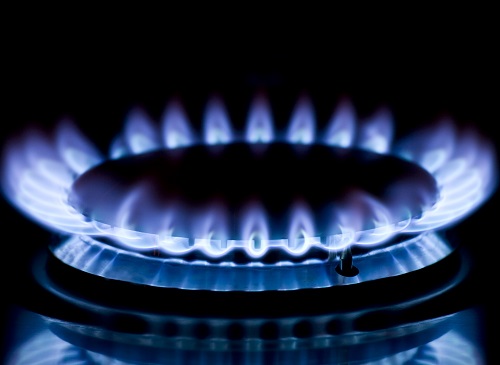U.S. Gas Jumps Almost 9% With Oil Price Gain, Hopes of Shale Output Cuts
(Reuters) — U.S. natural gas futures soared almost 9% on Tuesday, following a 10% increase in oil prices, on hopes of economic stimulus and expectations the oil price collapse will prompt U.S. drillers to cut back on oil and gas production in shale basins.
Analysts said a cutback in U.S. production and a possible increase in gas use spurred by low prices should give demand a chance to grow, absorbing some of the supply glut that built up over the past few years.
"Gas futures gained momentum throughout the day yesterday and are building on those increases today as the market continues to garner support from oil's abrupt tumble" on Monday, Daniel Myers, market analyst at Gelber & Associates in Houston, said in a report, noting "lower oil prices are further solidifying anticipated supply reductions this year."
Much of the growth in U.S. gas output in recent years has come from gas associated with the production of oil in shale basins like the Permian in West Texas and eastern New Mexico. Since drillers in oil basins were seeking crude, that production was insensitive to low gas prices.
Energy firms kept producing oil and associated gas even though gas prices in the Permian fell to negative levels. In 2019, they also burned or flared record amounts of gas in the Permian because output there increased more quickly than companies could build pipelines to transport the fuel to markets.
The oil price rout has already prompted several U.S. shale producers to rush to deepen spending cuts, which could reduce production.
In their biggest daily percentage gain since January, front-month gas futures for April delivery on the New York Mercantile Exchange rose 15.8 cents, or 8.9%, to settle at $1.936 per million British thermal units, their highest close in almost three weeks.
Gains in some forward months were even bigger than the front-month, with futures for the balance of 2020 up about 7% and calendar 2021 trading over 2022 for the first time since January.
Oil prices jumped by 10% on Tuesday, bouncing from the biggest rout in nearly 30 years a day earlier, as the possibility of economic stimulus encouraged buying and U.S. producers slashed spending in a move that could cut output.
Traders noted the rise in gas prices so far this week came even though meteorologists forecast milder weather over the next two weeks. That could cut heating demand enough this week to allow utilities to inject gas into storage for the first time this year - about three weeks earlier than usual.
Data provider Refinitiv projected average demand in the U.S. Lower 48 states, including exports, would edge up from 99.8 billion cubic feet per day (bcfd) this week to 101.8 bcfd next week. That is much lower than Refinitiv's forecast on Monday of 100.7 bcfd this week and 107.5 bcfd next week due to the milder outlook.
Related News
Related News

- Keystone Oil Pipeline Resumes Operations After Temporary Shutdown
- Freeport LNG Plant Runs Near Zero Consumption for Fifth Day
- Biden Administration Buys Oil for Emergency Reserve Above Target Price
- Mexico Seizes Air Liquide's Hydrogen Plant at Pemex Refinery
- Enbridge to Invest $500 Million in Pipeline Assets, Including Expansion of 850-Mile Gray Oak Pipeline
- Enbridge Receives Approval to Begin Service on Louisiana Venice Gas Pipeline Project
- U.S. to Acquire 3 Million Barrels of Oil for Emergency Reserve in September
- AG&P LNG Acquires 49% Stake in Vietnam's Cai Mep LNG Terminal
- BP's Carbon Emissions Increase in 2023, Ending Decline Since 2019
- Texas Sues EPA Over Methane Emission Rules for Oil and Gas Sector





Comments